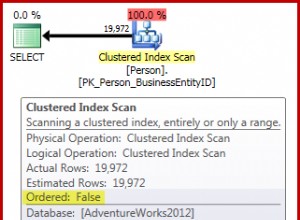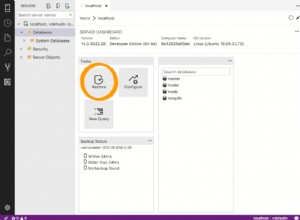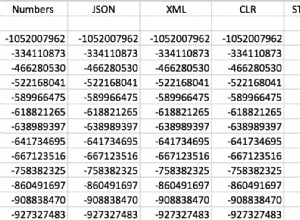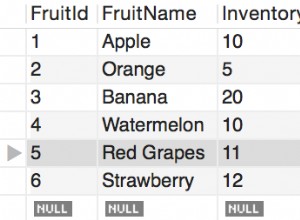¿Por qué no lo intentamos?
Configurar la base de datos
CREATE DATABASE so1;
USE so1;
CREATE TABLE notification (`id` BIGINT(20), `date` DATE, `text` TEXT) ENGINE=InnoDB;
INSERT INTO notification(id, `date`, `text`) values (1, '2011-05-01', 'Notification 1');
INSERT INTO notification(id, `date`, `text`) values (2, '2011-05-02', 'Notification 2');
INSERT INTO notification(id, `date`, `text`) values (3, '2011-05-03', 'Notification 3');
INSERT INTO notification(id, `date`, `text`) values (4, '2011-05-04', 'Notification 4');
INSERT INTO notification(id, `date`, `text`) values (5, '2011-05-05', 'Notification 5');
Ahora, inicie dos conexiones de base de datos
Conexión 1
BEGIN;
SELECT * FROM notification WHERE `date` >= '2011-05-03' FOR UPDATE;
Conexión 2
BEGIN;
Si MySQL bloquea todas las filas, la siguiente declaración bloquearía. Si solo bloquea las filas que devuelve, no debería bloquear.
SELECT * FROM notification WHERE `date` = '2011-05-02' FOR UPDATE;
Y de hecho bloquea.
Curiosamente, tampoco podemos agregar registros que se leerían, es decir,
INSERT INTO notification(id, `date`, `text`) values (6, '2011-05-06', 'Notification 6');
bloques también!
No puedo estar seguro en este momento si MySQL sigue adelante y bloquea toda la tabla cuando un cierto porcentaje de filas están bloqueadas, o si es realmente inteligente para asegurarse de que el resultado de SELECT ... FOR UPDATE la consulta nunca puede ser modificada por otra transacción (con un INSERT , UPDATE o DELETE ) mientras se mantiene el bloqueo.




